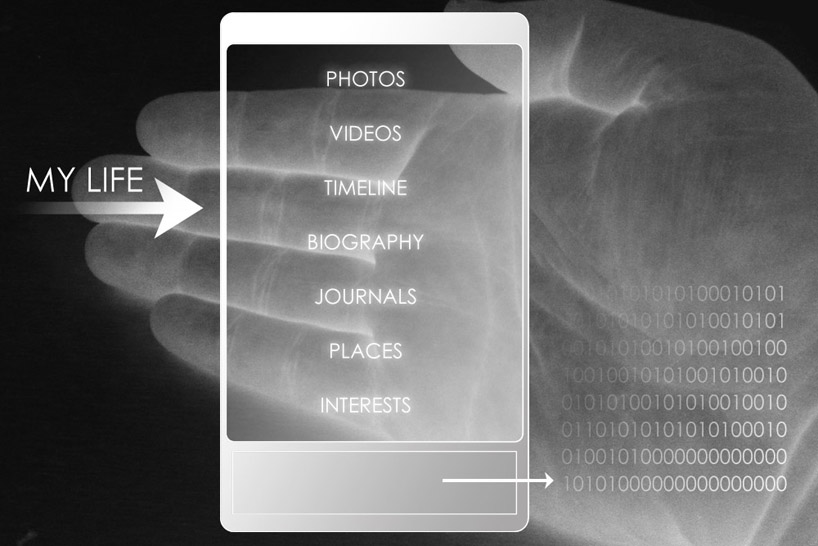
Landscape of Reflections by David Choi from usa
designer's own words:
Our lives are constantly digitized through the ubiquitous use of personal technology. Capturing the moments of one's life is becoming increasingly easy with further technological advancements. This unprecedented capability will allow for development of new ways of memorializing one's life. Personal experiences become electronic binary codes, which are stored into virtual data base, which in turn become the stuff of personal reflections.
From photos to videos, emails to social media, history of website visits, interests, and other digital media, personal technology is already setting us on this trajectory of enabling us to create multimedia expressions of personal histories.
A voice message from a close family member, recorded and stored on a cell phone, becomes hauntingly valuable upon passing of that person. What will happen to all of the recorded data of our lives as we age, as we grow old, and as we pass on from this life? In the past, recording of one's life was limited by the physicality of the recording media--pictures can fade, recordings became fuzzy, and writings on paper disintegrate with age.
Creating future spaces for bereavement is founded on all of the bits of data from personal hand-held devices; unconsciously or consciously, moments and details of our lives are transcribed onto multiple media, which ultimately become building blocks for creating a landscape of personal reflections.
We envision the landscape of reflections to be both inside and outside of buildings, and built as a matrix that seamlessly connect exterior and interior environments. In the future, ritual of bereavement can take place within a matrix environment of transparent screens. The virtual life is expressed onto physical space the through use of transparent screen technology. These screens define walls that surround grieving visitors with multimedia experience extracted from the passing person's recorded history. The visitors can be embedded inside photos, videos, and other poignant recordings by the dead.
The space for bereavement is both physical and non-physical in nature. In the latter, it is an intensely personal inner space of powerful effects, occurring deep inside one's soul. Of the former, the task of physical space is to allow that "something else" to takes place--the task of the physical is to allow the visitor to go deep into one's soul. As in a matrix, which is defined as something from which something else originates, develops, or takes form, the landscape of reflections is envisioned as a matrix that can initiate that intense feeling for the loved one who has passed away.
As a matrix, the whole space can be divided and sized to hold various activities of various sizes, allowing for flexibility of use and personalization of space. Transparent screen technology has the ability to vary its opacity level, which in turn allows for varying degrees of privacy by creating dark screens that separate spaces. The matrix can also be left as a physically uniform array of translucent screens and rooms. Multiple spaces in the matrix can be used simultaneously, as we have done in traditional cemetery settings. On such holidays as Memorial Day, Veteran's Day, people gather simultaneously to honor the dead. While privacy is important to maintain, it is also important to instill a sense of community by being respectful to the dead simultaneously.
The screens can also display scenes of nature, abstract designs, or images of places that was once recorded by the dead. Some people may find it too intense to display images of the dead person. To accommodate for such sensitivity, the screens can project beautiful and happy sceneries. Inversely, the recordings from the dead can be displayed outdoors. By weatherproofing the transparent screens, we can replace the traditional gravestones with multimedia devices, and ultimately create a landscape where the dead can play.
This is only the beginning of what is possible in designing for the future of deathcare. Currently websites for obituaries and funeral services exist, but they do not correspond to the trend of a recent generation that will grow up with ever increasing availability of digital technology. The future websites for personal history will be designed to work in concert with future spaces for funerary rituals. As more and more people of facebook generation will grow old, more and more of social media will transform to accommodate their passings. This proposal for landscape of reflections is but a starting point to what may be possible for designing multimedia spaces.
Personal technology enables us to capture moments of our lives and store them for perpetuity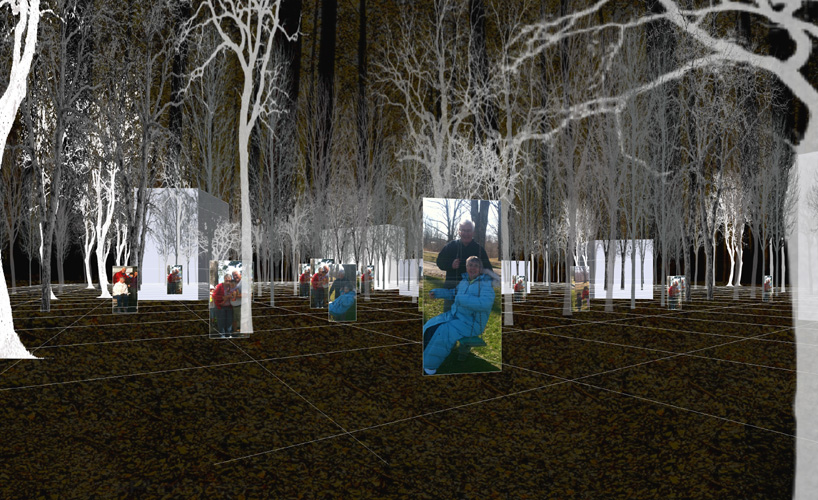
In the grove of memories, images of our loved ones live on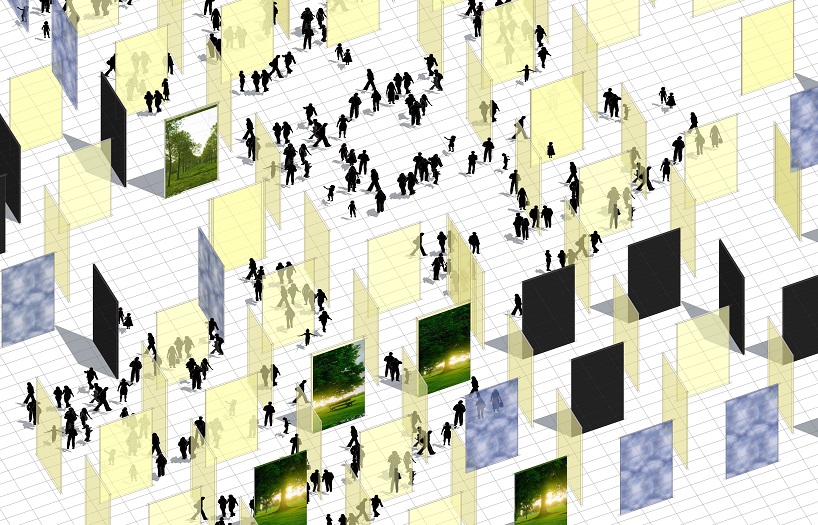
The Matrix of Transparent Monitors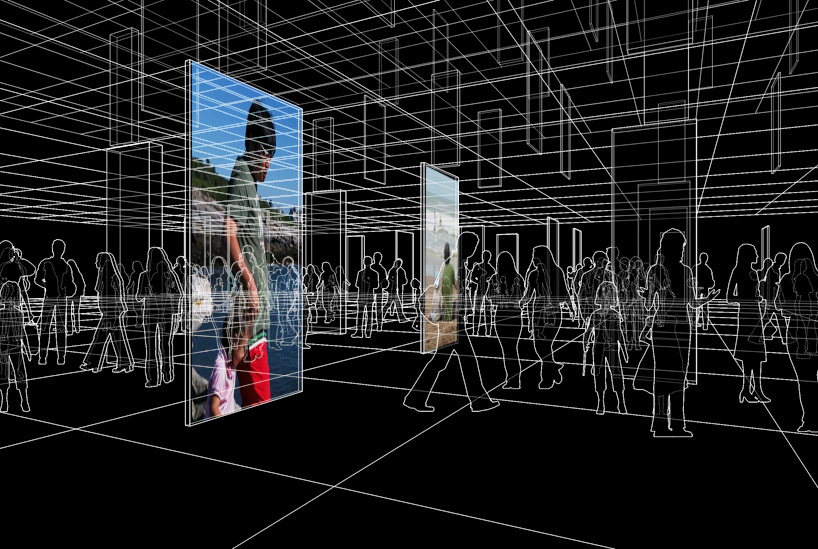
Projections in darkness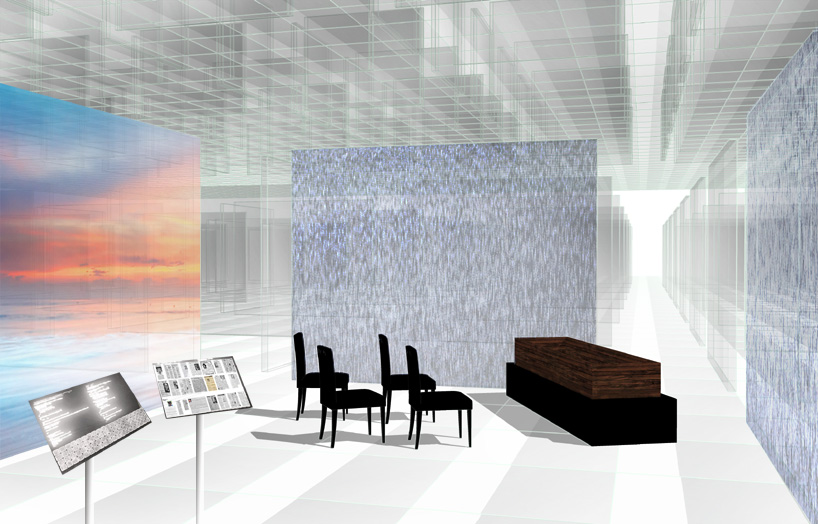
Private space for wailing protected by scenes of nature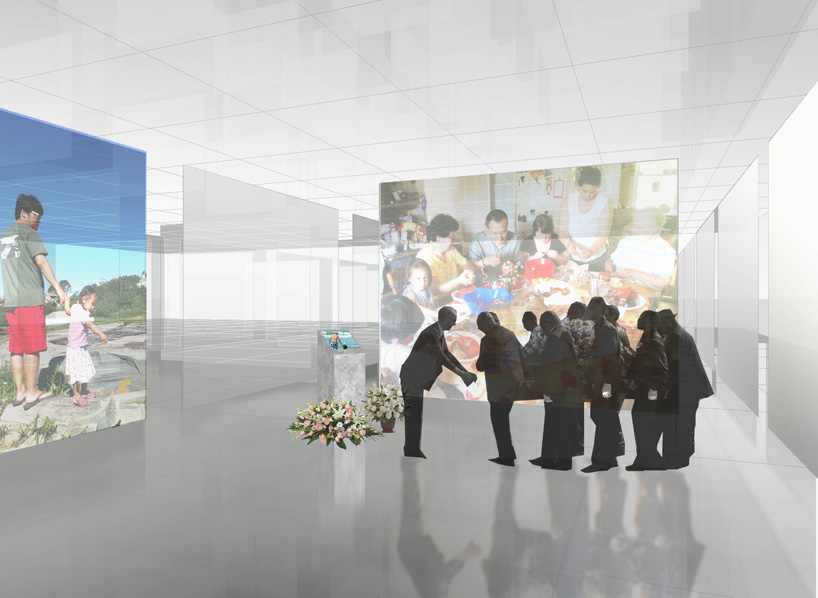
The future of funerary rituals